Alameda neighbors rescue Osprey from fishing line
By Ilana DeBare
Lou Ann Roth and her husband Scott heard some splashing last month outside their condo on the northwest shore of Alameda. When they went out on their deck to investigate, they saw a large bird frantically flapping in the water near a neighbor’s dock.
Looking more closely, they realized it was an Osprey entangled in fishing line.
“There was a bobber – a fishing tackle float, oval-shaped and white – attached to it,” said Lou Ann, who has lived in Alameda for ten years. “It was trying to get out of the water onto the dock and couldn’t do so. It was flapping and flapping.”
This Osprey faced an all-too-common threat: discarded plastic fishing line. Millions of tons of monofilament lines and nets litter the oceans, strangling or drowning water birds and marine mammals while taking up to 650 years to biodegrade.
Lou Ann and Scott could tell this was a bird in trouble. Scott called a local bird rescue group. Meanwhile, Lou Ann contacted their neighbor who owned the dock close to the Osprey, Nina Marie.
Nina had been rushing to leave for her job as a hairstylist but stopped. “I looked out the window and saw the bird drowning,” she said. “Its wings were up but its body was underwater. It kept bobbing down and trying to flap to come up.”
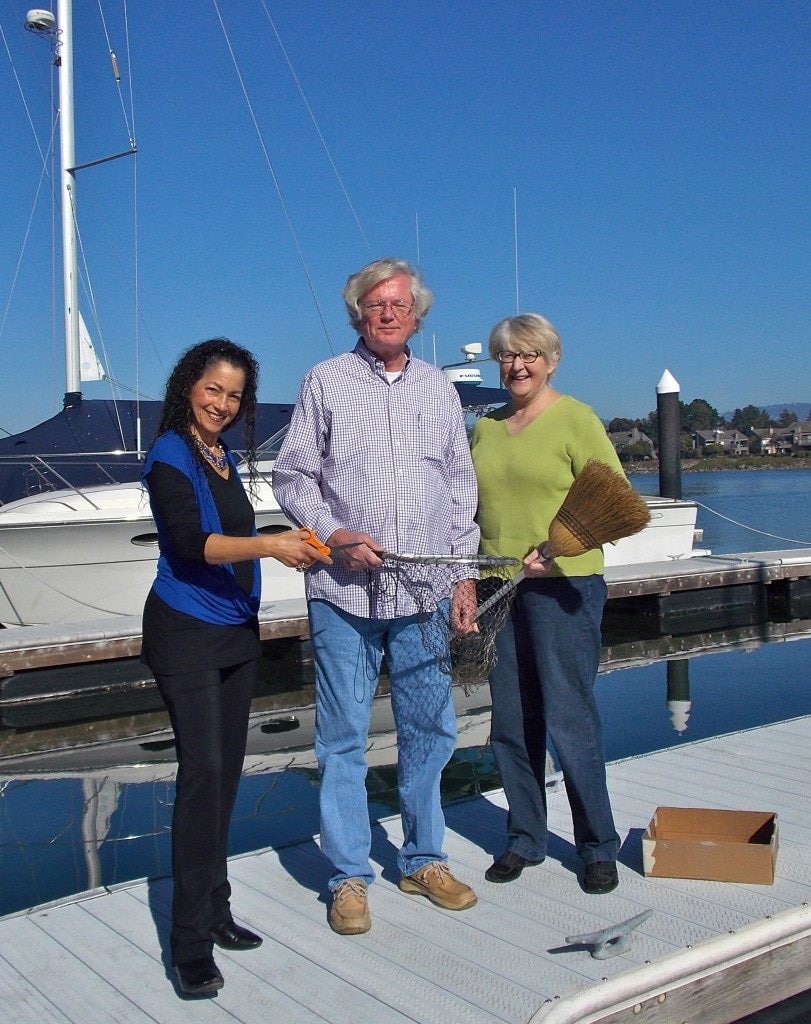
Lou Ann and Scott had been trying to rescue the Osprey with a small fishing net, but it wasn’t long enough to reach the bird. Nina brought a broom and heavy gloves: She had rescued a lot of injured animals as a child and knew the dangers of beaks and talons.
Nina used the broom to pull the bird closer to the dock. Scott used the net to gather the bird up and into a cardboard box. They saw that it wasn’t just tangled up with a single bobber – there were three sinkers plus a ten-inch-long fish attached to the line.
“Man, this bird was tangled up,” Nina said.
While Scott contained the bird’s head with the net, Nina used her haircutting skills to snip all the line off of the Osprey, working under its feathers and close to its body. Then they let the bird rest in the box to recover.
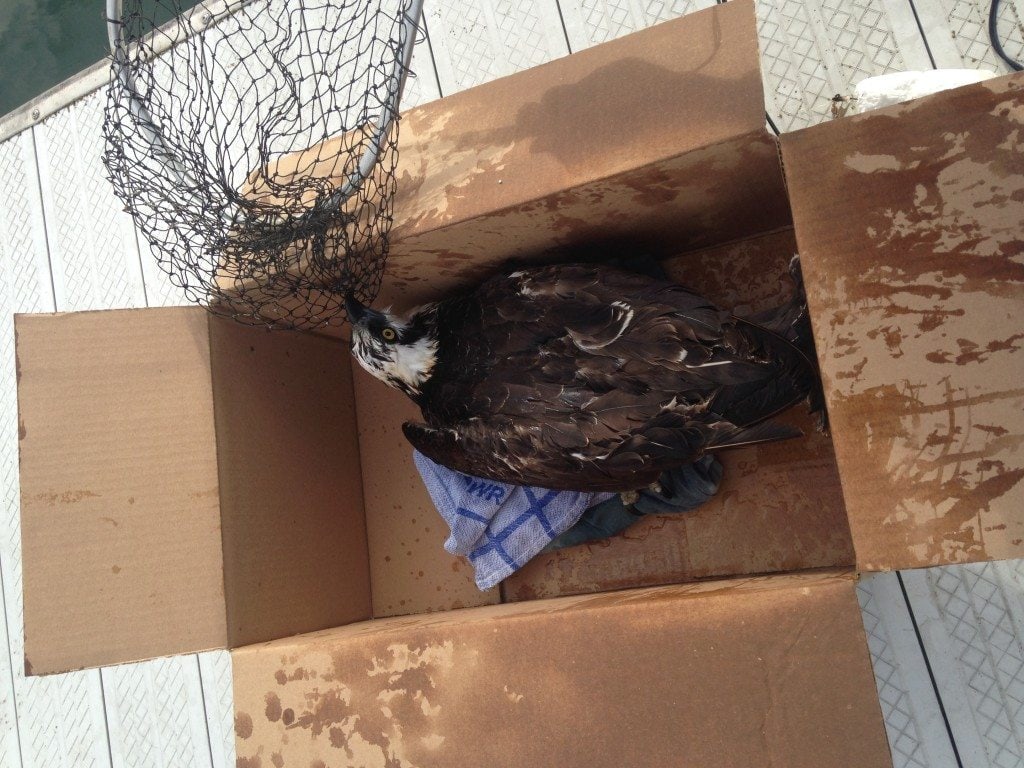
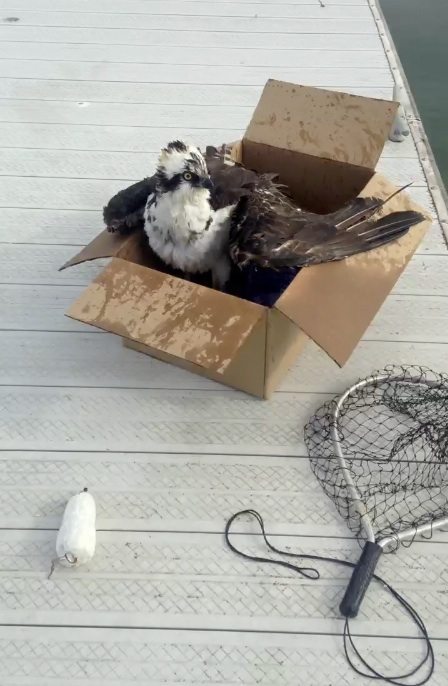
“It was very quiet, out of breath,” Nina said. “It would not have lasted much longer in the water.”
“It shivered a little, panted a little, made some clucking sounds,” Lou Ann said. “After a while, it raised up, stretched its wings, fluffed itself and looked around. Then it hopped up on the edge of the box. Eventually it hopped off and continued to flap its wings like it was drying them. It was really soaking wet.”
After about 20 minutes the Osprey lifted off, circled the condos, and flew off towards Alameda Point.
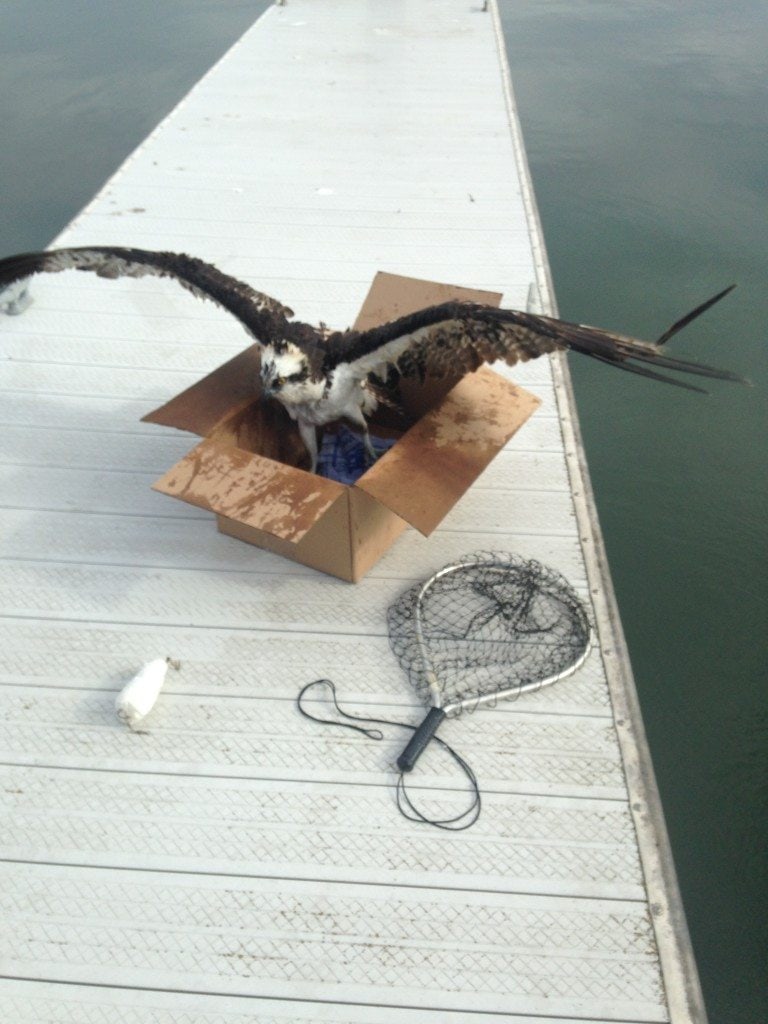
The Osprey may have been one of a pair that have tried to nest at Alameda Point in recent years. Earlier this winter, Alameda birders had noticed a female Osprey with line dangling from her.
After the January rescue, that female bird was spotted on her usual perch – without any visible line.
“I really do suspect it’s the same Osprey, and Lou Ann, Scott, and Nina surely saved her life,” said Cindy Margulis, Executive Director of Golden Gate Bird Alliance.
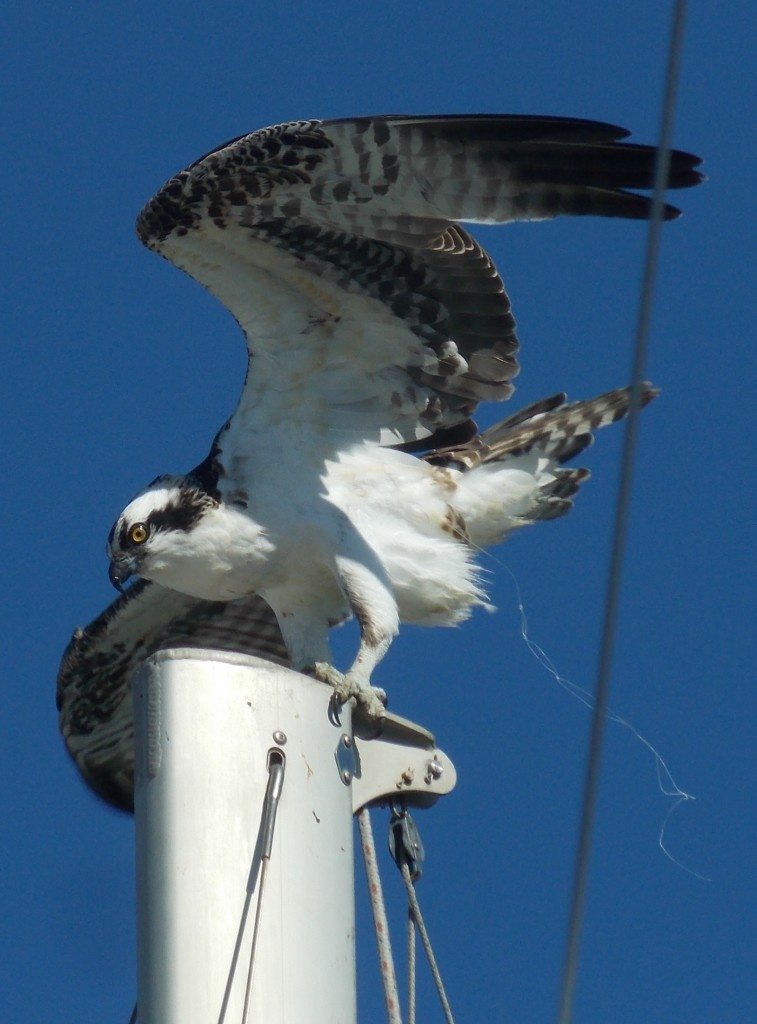
This particular encounter of a bird and fishing line had a happy ending, thanks to caring and skilled neighbors. But many other such encounters end tragically with needless suffering or death of the entangled bird.
The long-term solution for preventing the deadly hazard of monofilament debris is to increase awareness and education of fisherman, and to provide specialized containers for properly discarding and recycling fishing line.
In the very near future, Golden Gate Bird Alliance hopes to work with shorefront land agencies to place more monofilament recycling containers in popular fishing venues and to encourage local fishermen to dispose of their fishing line in appropriate ways If you would like to get involved with community outreach around fishing line recycling, email Noreen at nweeden@goldengateaudubon.
—————————-
NOTE: In general, do NOT try to rescue injured raptors without training! They are wild animals and it is easy to injure yourself or the bird. If you find an injured bird, contact a wildlife rescue organization such as WildCare at (415) 456-SAVE, Wild Rescue at (866) WILD-911, or International Bird Rescue (for water birds and shorebirds) at (707) 207-0380.
